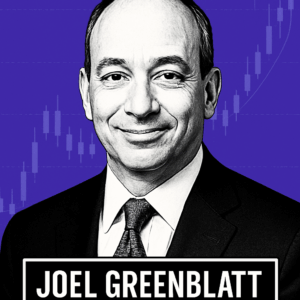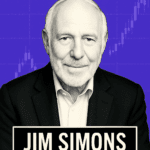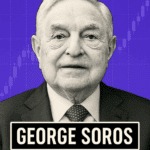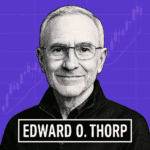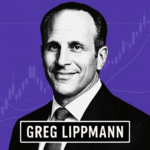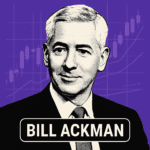Joel Greenblatt has distinguished himself as one of the most successful value investors of his generation, combining academic insight with real-world investment success. He is best known for his exceptional track record at Gotham Capital, where he achieved annualized returns of 40% over two decades, his bestselling book “The Little Book That Beats the Market,” and his creation of the “Magic Formula” investing approach that democratized sophisticated value investing principles for individual investors. Beyond his investment success, Greenblatt has made significant contributions to education reform and philanthropy while maintaining his position as a respected voice in value investing circles.
Early Life and Education
December 13, 1957
Joel Greenblatt is born in Great Neck, New York. From an early age, he displays intellectual curiosity and analytical abilities that would serve him well in his future investment career.
1976-1980
Greenblatt attends the Wharton School at the University of Pennsylvania, where he studies finance and develops a strong foundation in accounting principles and business valuation. He graduates summa cum laude with a B.S. in Economics in 1980. During his time at Wharton, Greenblatt begins to develop his interest in value investing, studying the principles established by Benjamin Graham and further developed by Warren Buffett.
1980-1982
After completing his undergraduate studies, Greenblatt continues his education at the Wharton School, earning an M.B.A. in 1982. His graduate studies deepen his understanding of financial analysis, corporate restructuring, and special situations investing – areas that would later become central to his investment strategy.
Early Career and Founding of Gotham Capital (1982-1985)
1982-1984
Upon completing his MBA, Greenblatt begins his professional career working at a boutique investment firm where he focuses on risk arbitrage and special situations. He quickly demonstrates an aptitude for identifying undervalued companies and unique investment opportunities. During this period, he refines his approach to value investing, focusing on businesses with strong returns on capital and attractive earnings yields—principles that would later become the foundation of his Magic Formula.
1985
At age 27, Greenblatt takes a major career leap by founding Gotham Capital with $7 million in startup capital, much of it from junk bond king Michael Milken. Departing from conventional fund structures, Greenblatt establishes Gotham as a limited partnership with a unique approach: he manages a concentrated portfolio of deeply undervalued stocks, often taking meaningful positions in special situations where he identifies significant market mispricings. His investment strategy combines detailed fundamental analysis with a focus on businesses with high returns on invested capital trading at attractive valuations.
Gotham Capital’s Rise to Prominence (1985-1995)
1985-1989
In Gotham Capital’s early years, Greenblatt focuses on special situations investing, including spinoffs, restructurings, and merger arbitrage. His approach involves intensive research to identify companies where asset values significantly exceed market prices. During this period, he begins developing many of the techniques that he would later share in his book “You Can Be a Stock Market Genius.” Despite the market crash of 1987, Gotham Capital delivers strong performance by concentrating on fundamentally sound businesses trading at discounted prices.
1990-1994
Gotham Capital’s investment strategy continues to evolve, with Greenblatt maintaining his focus on special situations while increasingly emphasizing businesses with high returns on capital. The fund’s strong performance attracts attention within investment circles. During this period, Greenblatt also makes one of his most notable investments in a distressed position in Wells Fargo Alarm Services. After the company restructures, his investment yields substantial returns, exemplifying his ability to identify value in complicated situations.
1995
After a decade of exceptional performance, with Gotham Capital generating annualized returns of approximately 50%, Greenblatt makes a significant decision: he returns all outside investor capital, transforming Gotham into a family office managing only his own funds and those of his partners. This unusual move gives him complete freedom to pursue his investment strategy without concerns about client redemptions or short-term performance pressures. By this point, Gotham has established a remarkable track record, with $7 million of initial capital growing to over $240 million.
Author, Educator, and Philanthropist (1996-2005)
1997
Greenblatt publishes his first book, “You Can Be a Stock Market Genius: Uncover the Secret Hiding Places of Stock Market Profits.” The book shares his specialized knowledge of spinoffs, restructurings, and special situations investing, providing individual investors with insights previously available primarily to institutional investors. Despite its somewhat promotional-sounding title, the book is recognized for its substantive content and practical approach, quickly becoming a cult classic among value investors.
1996-2002
While managing his family office, Greenblatt begins teaching at Columbia Business School, where he leads classes on value investing and special situations. His courses become among the most popular at Columbia’s prestigious value investing program. Simultaneously, he deepens his involvement in philanthropy and education reform, contributing to several educational initiatives in New York City. His investment approach continues to evolve as he increasingly systematizes his methodology for identifying high-quality businesses trading at attractive prices.
2002
Greenblatt co-founds the Success Academy Charter Schools (initially known as Harlem Success Academy) with Eva Moskowitz. This network of charter schools, focused on providing high-quality education in underserved communities, would eventually grow to become one of the largest and highest-performing charter school networks in New York City, significantly influencing education reform efforts nationwide.
2005
Greenblatt publishes his second book, “The Little Book That Beats the Market” (later updated as “The Little Book That Still Beats the Market”). In this highly accessible work, he introduces the “Magic Formula” investing strategy—a systematic approach to identifying quality companies trading at bargain prices by ranking stocks based on their combination of return on capital and earnings yield. The book brings sophisticated value investing principles to mainstream investors through a simple, rules-based approach. To support readers in implementing this strategy, Greenblatt also launches MagicFormulaInvesting.com, a website that provides screening tools based on his formula.
Gotham Asset Management and New Ventures (2006-Present)
2007-2008
During the financial crisis, Greenblatt’s value-oriented approach navigates the market turbulence effectively. His emphasis on high-quality businesses with strong balance sheets and sustainable competitive advantages helps protect against the worst of the downturn. Greenblatt becomes increasingly vocal about the extraordinary opportunities available to value investors in the crisis environment, encouraging a long-term perspective amid market panic.
2009
After years of managing primarily his own capital, Greenblatt partners with Robert Goldstein to form Gotham Asset Management, expanding beyond the family office structure of Gotham Capital. This new entity begins to offer various long/short equity strategies to outside investors, applying Greenblatt’s value principles within a more institutional framework. The firm develops a systematic approach to value investing, using quantitative methods to implement Greenblatt’s fundamental principles across a broad universe of stocks.
2010
Greenblatt publishes “The Big Secret for the Small Investor,” expanding on his investing philosophy and addressing common behavioral mistakes that diminish investor returns. The book emphasizes the importance of value-weighted index approaches as an alternative to market-cap-weighted indexes, arguing that the former provides superior exposure to undervalued companies.
2012-2013
Gotham Asset Management launches its first mutual funds, making Greenblatt’s investment approach accessible to retail investors with lower minimum investments than traditional hedge funds. The Gotham Absolute Return Fund and Gotham Enhanced Return Fund implement long/short strategies based on systematic value principles, aiming to deliver market-beating returns with reduced volatility.
2013-2017
Gotham continues to expand its mutual fund offerings, introducing various products with different risk-return profiles while maintaining its value-focused approach. Greenblatt becomes increasingly outspoken about market inefficiencies created by the growing popularity of passive investing, arguing that this trend creates opportunities for disciplined value investors. By the end of this period, Gotham Asset Management is managing approximately $8 billion across various strategies.
2017
In collaboration with Syracuse University, Greenblatt establishes Value Investors Club at Syracuse (VICS), a student-run investment fund that provides hands-on experience in value investing while supporting scholarships for underrepresented students. This initiative reflects his ongoing commitment to both investment education and expanding opportunities for disadvantaged communities.
2018-2020
Greenblatt faces one of the most challenging periods for value investing, as growth strategies significantly outperform value approaches amid low interest rates and the rise of technology giants. Despite this challenging environment, he maintains his conviction in value principles, arguing that the growing valuation disparities between popular and unpopular stocks are creating substantial opportunities for patient investors. During this period, he becomes increasingly focused on the concept of “value traps” versus genuine value opportunities, emphasizing the importance of business quality and sustainable competitive advantages.
2020
Amid the COVID-19 market disruption, Greenblatt emphasizes the exceptional opportunities available in certain segments of the market. He publishes “Common Sense: The Investor’s Guide to Equality, Opportunity, and Growth,” which extends beyond investment topics to address broader economic and social policy issues. The book argues for market-based solutions to address inequality while maintaining economic growth, reflecting Greenblatt’s belief in the power of well-designed systems to create better outcomes.
2021-Present
As value investing experiences a resurgence amid rising interest rates and inflation concerns, Gotham’s strategies begin to benefit from the market rotation. Greenblatt remains active in investment management, education, and philanthropy. Gotham Asset Management continues to manage approximately $4-6 billion across various value-oriented strategies. Greenblatt maintains his position as an adjunct professor at Columbia Business School, where he continues to teach value investing principles to new generations of investors.
Greenblatt’s Key Investment Principles
1. Quality and Value: The Twin Pillars
At the core of Greenblatt’s approach is the simultaneous emphasis on business quality (measured by return on invested capital) and valuation (measured by earnings yield). This dual focus prevents investors from overpaying for quality or falling into value traps with poor underlying businesses. In his Magic Formula, these two factors form the basis for ranking and selecting investments, creating a portfolio of good businesses available at bargain prices.
2. Special Situations as Opportunities
Greenblatt recognizes that certain corporate events – spinoffs, restructurings, post-bankruptcy equities, and merger securities – often create market inefficiencies and mispricing. These complex situations typically receive less analyst coverage and institutional interest, creating opportunities for investors willing to conduct thorough research. His approach to special situations emphasizes understanding the motivations of various stakeholders and identifying situations where structural factors lead to temporary undervaluation.
3. Concentrated but Prudent Positioning
While advocating for concentration in high-conviction ideas, Greenblatt balances this with prudent risk management. His early Gotham Capital portfolio typically held 5-8 core positions, enabling meaningful outperformance when his analysis proved correct. However, he emphasizes the importance of understanding business fundamentals deeply before taking concentrated positions, distinguishing his approach from speculative concentration.
4. Systemizing Value Principles
Greenblatt pioneered the systemization of value investing through his Magic Formula. By creating a disciplined, rules-based approach, he helps investors overcome behavioral biases that often lead to poor timing decisions. This systematic framework applies fundamental principles consistently across a broad universe of stocks, combining the wisdom of traditional value investing with the discipline of quantitative approaches.
5. Patience and Long-Term Orientation
Greenblatt emphasizes that successful value investing requires patience, with his Magic Formula typically needing 3-5 years to demonstrate outperformance. He acknowledges that the strategy can underperform for extended periods but maintains that over full market cycles, focusing on the combination of business quality and attractive valuations leads to superior results. This long-term orientation allows investors to benefit from the eventual correction of market mispricings.
6. Margin of Safety as Risk Management
Following Benjamin Graham’s foundational concept, Greenblatt incorporates margin of safety into his investment approach by seeking businesses trading significantly below their intrinsic value. This valuation cushion provides protection against analytical errors and unforeseen business challenges. His earnings yield focus (the inverse of the P/E ratio) provides a practical method for identifying stocks with this margin of safety.
7. Process Over Prediction
Rather than attempting to predict short-term market movements or precise business outcomes, Greenblatt focuses on establishing a sound investment process that tilts probabilities in investors’ favor. By systematically investing in businesses with strong fundamentals at attractive prices, his approach harnesses the power of statistical advantages over time without requiring perfect foresight about individual companies or market conditions.
Comparing Greenblatt to Other Investment Legends
- Greenblatt vs. Warren Buffett: While both emphasize quality businesses, Greenblatt’s approach is more systematic and rules-based compared to Buffett’s more qualitative assessment of competitive advantages. Greenblatt’s Magic Formula makes quality-value investing accessible to ordinary investors through a repeatable methodology, whereas Buffett’s approach relies more heavily on business judgment and qualitative factors that are difficult to systematize.
- Greenblatt vs. Benjamin Graham: Greenblatt modernized Graham’s deep value approach by emphasizing business quality (return on capital) alongside valuation, moving beyond Graham’s focus on statistical cheapness and net current asset value. Unlike Graham’s preference for a diverse basket of deeply undervalued stocks, Greenblatt’s early career featured more concentrated positions in special situations where he identified significant mispricing.
- Greenblatt vs. James Simons: While Simons built Renaissance Technologies around complex quantitative models requiring advanced mathematics and massive computational power, Greenblatt created an accessible quantitative approach using just two main factors (ROIC and earnings yield) that individual investors can implement. Greenblatt’s approach maintains a clear connection to fundamental business principles, unlike Renaissance’s more opaque statistical arbitrage strategies.
Legacy and Impact
Joel Greenblatt’s influence extends across multiple domains of investing and education:
- Democratizing Value Investing: Through his Magic Formula and accessible books, Greenblatt has made sophisticated value investing principles available to ordinary investors, bridging the gap between professional and retail investment approaches.
- Advancing Special Situations Analysis: His work on spinoffs, restructurings, and other corporate events has significantly contributed to the field of special situations investing, providing analytical frameworks that investors continue to apply today.
- Educational Innovation: Both through his teaching at Columbia Business School and his establishment of the Value Investors Club, Greenblatt has helped train a new generation of value investors while fostering the exchange of investment ideas.
- Education Reform: His co-founding of Success Academy Charter Schools has demonstrated how principles of measurement, accountability, and systematic improvement can be applied to education, particularly in underserved communities.
- Systematic Value Approaches: Greenblatt pioneered the systematization of value investing principles, helping bridge the gap between discretionary fundamental analysis and quantitative investing – an approach that has influenced numerous investment strategies.
Throughout his career, Greenblatt has consistently demonstrated that investors can achieve superior returns by focusing on the fundamental economics of businesses while maintaining valuation discipline. His emphasis on making sophisticated investment strategies accessible to ordinary investors reflects his belief that well-designed systems can help level the playing field in both investing and education.
